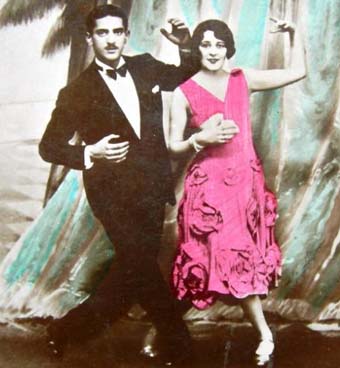
On the occasion of the First International Congress of Jazz in Spain, organized by Sub-directorate General for Music of CulturArts Music – Valencian Regional Government, the SGAE Foundation in collaboration with the University of Valencia and the Universitat Politècnica de València, the Cultural Centre La Nau opens this Wednesday 27 November, the exhibition "With accent. Graphics memory of jazz in Spain".
The inauguration will be held Wednesday 27 at 19:00 in the Sala Oberta of the historical building of the University will be accompanied with a performance by jazz students from Berklee College of Music in Valencia, directed by Victor Mendoza. The exhibition will run until next 12 January.
Curated by Jorge Garcia and Toni Picazo, the exposure 'With accent. Graphics memory of jazz in Spain' expects to reconstruct the evolution of jazz and its graphical representation in our country- have an impact on the trajectory of some of its leading - through a selection of posters and records, magazines, books, actors and scores brochures and other documents, from various public and private collections. As background in the Sala Oberta of La Nau, jazz sounds.
"I think material of the twenties and thirties will specially draw attention, since it is very little known" says Jorge García, who is also one of the co-directors of the congress. In those days, jazz was "a very important sociological phenomenon in Spain. People was captivated by its innovative rhythms such as the exoticism of black performers and instruments as visually attractive as drums ".
For his part, Toni Picazo stresses that the material exposed in La Nau let people get closer "to the way jazz has been perceived, i.e. its visual package. The public will see through posters and other graphic material the most recurrent stereotypes associated with this music, aesthetic trends of the moment and design figures who collaborated with jazz. "The design allowed the public to promote jazz and all the material presented to support artists, poster designers, illustrators, photographers and graphic designers can be seen at La Nau. From the echoes of the vanguards that accompanied their first steps to the rise of contemporary graphic artists linked to jazz, through the absorbed visual austerity of the dictatorship.
According to curators of the exposure, from the early twentieth century, jazz and musical styles that prefigured it entered Spain through the most luxurious spas and casinos of San Sebastian and Santander, where the royal family and the wealthy classes spent their summers, curious to know the latest international trends, or as part of the most exotic of the great circuses that toured the country. The new rhythms were received by our ancestors in amazement, surprise, contempt or enthusiasm, but never indifference. The African-American music was a synonym for modernity and cosmopolitanism, but for others was a signal decay and loss of secular roots; the fact is that very soon it became part of our music scene, popular in dance halls or incorporated in operettas and magazines. Even the tragedy of the civil war and the hostility of Franco succeed in wipe it off the map.
It might be said that jazz has ever known among us three great heyday: the end of the dictatorship of Primo de Rivera and the early years of the Republic, when the attraction for black culture reached its peak and musicians and foreign dancers - mostly American, but also Caribbean from different nationalities - populated billboards; secondly just after the war, with a paradoxical, fleeting and intense period of interest in hot music and big bands, against the nationalist proclamations; and thirdly the 1980s, which included the appearance of countless jazz festivals scattered throughout the nascent state of autonomies and the first steps of an impressive generation of young musicians today have become international benchmarks. Around these three great moments has been writing a story that becomes exhibition at the Cultural Centre La Nau.
The platform NAU XXI (http://nauxxi.uv.es) of the Office of the Vice‐Principal for Culture, Equality and Communication includes studies on the origin and evolution of jazz in Spain.
Last update: 26 de november de 2013 11:29.
News release



















